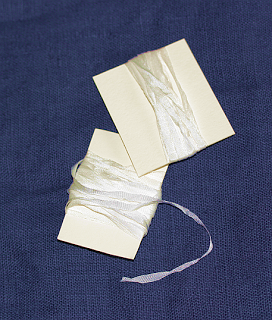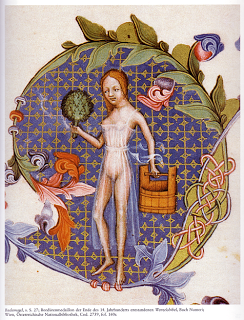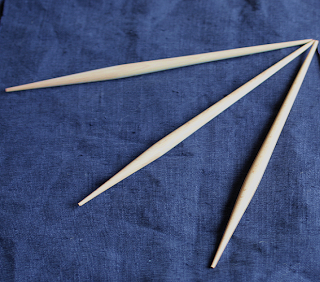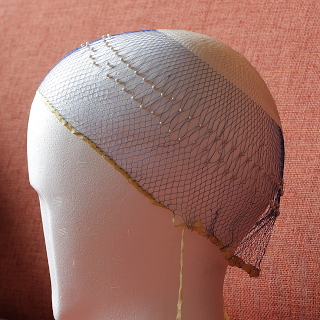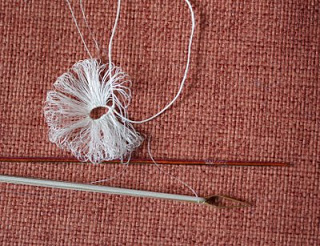The opening of yesterday's exhibition went really fine, and people came in all during the day to see the exhibition and look at the different textile techniques - so I call yesterday a success.
The Altstadtfest was very nice as well, with gloriously sunny weather and a lot of people strolling through the streets, eating, drinking, listening to music, watching crafts presentations, and generally amusing themselves.
Here are some photos from the exhibition:

Preparing for the opening - I'm sorting out my hairnet for demonstration of the technique, and you can see the demo band for tablet weaving (twill demonstration), still secured with a clamp and unattached, in front on the table. The brand-new wonderful table, by the way, that will accompany me to markets, events and any occasions I need a medieval table. I'm so happy about it!

This is a picture taking during my introduction speech for the exhibition - I was showing a snippet of spinning with the drop spindle to make people realise how much time is needed for making just the threads for weaving. This usually works very well, and it did also in Bad Staffelstein.

This picture was taken right after the official part, with the honorary guests and the gentleman of the bank who opened the exhibition. On the photo, you see two "royalties" at once - the "Korbkönigin" (Queen of Basketwork) from Lichtenfels, the German "Capital of Basket Making", and the "Thermenkönigin" (Queen of thermal springs) from Bad Staffelstein. And my colleague Marion, dressed medievally as well, who helped to draw people in and explain all day long.
So because yesterday was nice but exhausting, and I'm really tired today, I'm taking a day off. No work requiring brains today, hooray!
The Altstadtfest was very nice as well, with gloriously sunny weather and a lot of people strolling through the streets, eating, drinking, listening to music, watching crafts presentations, and generally amusing themselves.
Here are some photos from the exhibition:

Preparing for the opening - I'm sorting out my hairnet for demonstration of the technique, and you can see the demo band for tablet weaving (twill demonstration), still secured with a clamp and unattached, in front on the table. The brand-new wonderful table, by the way, that will accompany me to markets, events and any occasions I need a medieval table. I'm so happy about it!

This is a picture taking during my introduction speech for the exhibition - I was showing a snippet of spinning with the drop spindle to make people realise how much time is needed for making just the threads for weaving. This usually works very well, and it did also in Bad Staffelstein.

This picture was taken right after the official part, with the honorary guests and the gentleman of the bank who opened the exhibition. On the photo, you see two "royalties" at once - the "Korbkönigin" (Queen of Basketwork) from Lichtenfels, the German "Capital of Basket Making", and the "Thermenkönigin" (Queen of thermal springs) from Bad Staffelstein. And my colleague Marion, dressed medievally as well, who helped to draw people in and explain all day long.
So because yesterday was nice but exhausting, and I'm really tired today, I'm taking a day off. No work requiring brains today, hooray!





